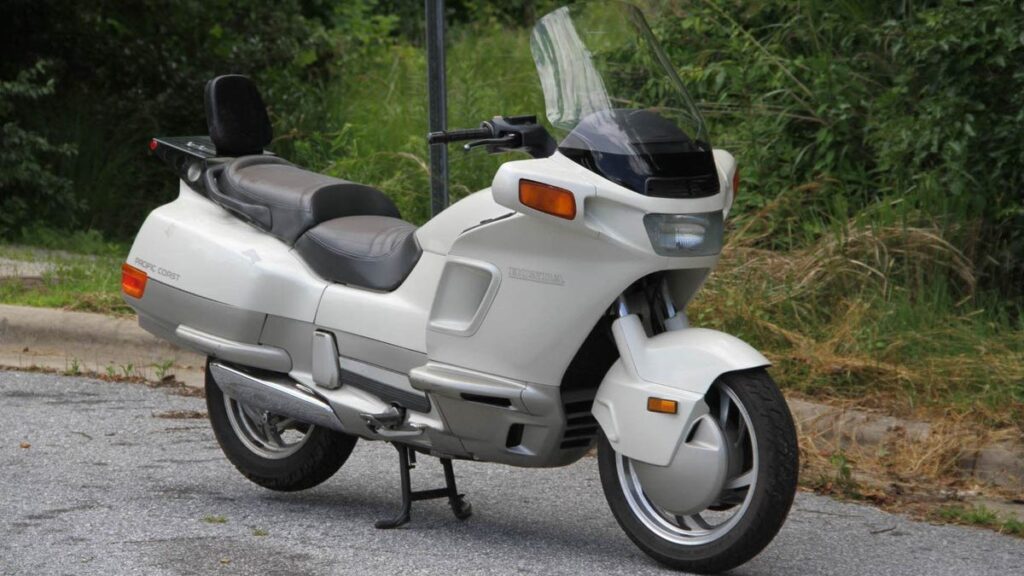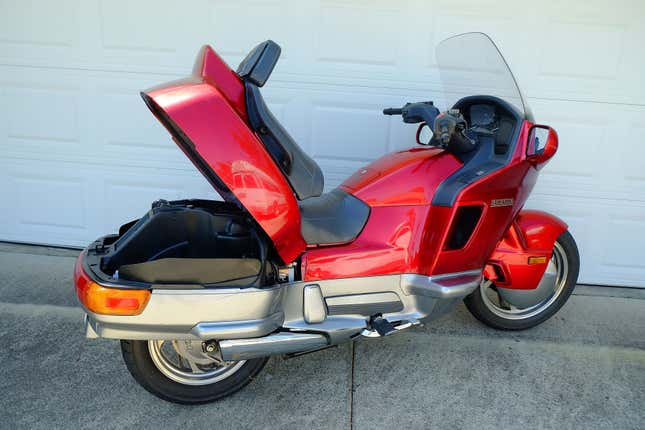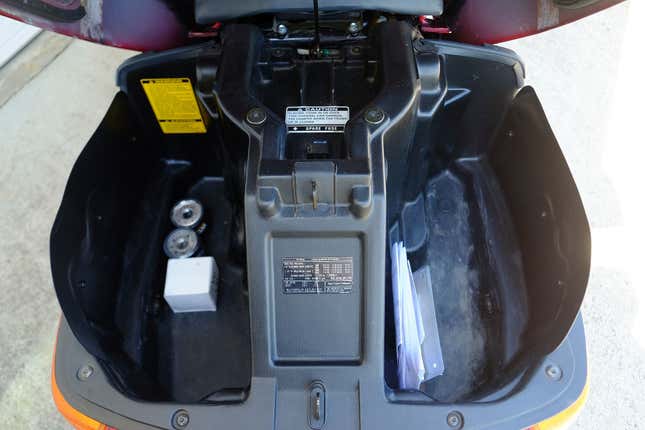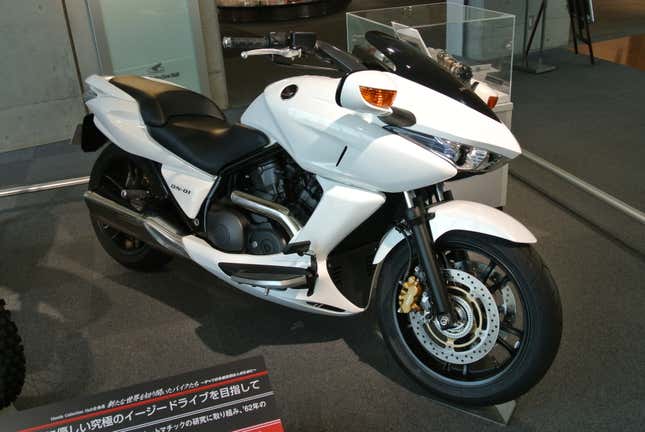For 20 Years, We Thought That Car Designers Created The Honda PC800. Here's The Real Story

Few motorcycle manufacturers have been as successful at sensing what consumers want as well as Honda has. In 1958, Honda caught lightning in a bottle by selling the Super Cub to non-riders and bicycle riders. In a subsequent attempt to gain more riders, Honda attempted to bring new riders to the two-wheel lifestyle.
This Foldable Electric Scooter Is a Motocompo for the 21st Century
How? A popular belief is that Honda’s automotive design team dreamed up a motorcycle to attract car drivers to motorcycling. But the reality is a bit different.
This is the Honda Pacific Coast 800. Launched in 1989, this futuristic-looking bike had some ideas that would still be good today, over 30 years later.
One of the most prominent features of the PC800’s design is the completely enclosed engine. Not even the racetrack-replica sportbikes hide their engines as totally as the PC800 does.
The entire motorcycle is clad in feet of plastic from top to bottom, hiding all the motorcycle bits it can. The intentional hiding of motorcycle parts might make you ask, who is motorcycle this for? Why hide the parts that make it a motorcycle?
When researching the PC800 I had the same question. I encountered a bunch of articles from different outlets saying the motorcycle was designed within an automotive division of Honda. Supposedly, the motorcycle was intended to get car drivers on a motorcycle. Then, I found a fun video by the Fortnine Youtube channel.
I love Fortnine’s videos, and this was no exception. However, it deepened the mystery for me, as not only was the motorcycle supposedly designed by Honda’s car designers, but specifically Acura’s designers. Maybe. I mean, it certainly looks inspired by a car. Check out this gauge cluster:

It even has a trunk that looks straight out of a car.

Forget side bags, forget cases, throw your stuff into an integrated trunk! Best of all it can be drained so it’s easy to clean.

Despite the bike’s car-ish design, I found nothing from Honda confirming anything of the sort. The earliest mentions of this were the personal blogs of Pacific Coast owners.
I decided to reach out to Honda’s Powersports division. Honda’s representative was part of the PC800’s launch and had also heard the same rumors. Alas, it was confirmed with one of the motorcycle’s designers that the Pacific Coast was designed entirely by Honda’s bike division:
I was able to confirm that design was all motorcycle personnel in Japan. No Acura or Honda Auto. This rumor probably got started because they initially built the clay model using one of the Auto studios. But it was all Motorcycle side design – sketch, clay to production.
That certainly settles it. The Pacific Coast was not designed by Acura or even any automotive designers. The theory for how the rumor got started actually makes sense. A good two decades have passed since the rumor was created and it got morphed like a bad game of Telephone. It’s a good example of how people can believe in something they read on the internet, only for it to turn out not to be true.
But that still leaves the question: Who was it made for? The PC800 looks and rides like a car. But if it isn’t designed to attract car drivers, who was it made for? The rep had the answer for that, too.
What I can tell you is that originally the PC800 was targeted to introduce new riders to motorcycling. People that wouldn’t consider a motorcycle because of the “inconveniences”… maintenance, storage, wind protection… hence the design being more auto like. Plastic encased everything so easy to clean and the thinking at the time was that this target customer wasn’t mechanical so seeing the engine might be intimidating. Had a large trunk to make it easy to carry things, don’t have to strap anything down just throw it in the trunk. Large windscreen/fairing to protect from elements. Everything was designed with this potential customer in mind.
That actually explains quite a lot. Honda wanted this motorcycle to be all about the riding experience without any of the downsides. The engine isn’t encased in plastic and rubber mounts to hide it away from a car driver, but to attract someone who may not want to wrench on their own motorcycle. It’s why Honda went to great lengths to make it as maintenance-free as possible. This is a big motorcycle for a non-rider and non-wrencher.
The bike itself wasn’t bad. Motorcycle.com felt the Pacific Coast 800 to be tame, but sensible. The engine moves the roughly 640 pound motorcycle with only 57 horses on tap, so power is predictable.
To do any major engine work you have to take off several pieces of plastic. There’s so much to remove to work on the carburetors that Honda placed the idle adjustment screw next to the fuel filler cap.
The Pacific Coast 800 didn’t stick around for long in America. The quirky motorcycle wasn’t offered in 1991-1993 and Honda ended sales of the model in 1998.

Honda tried to invite non-riders to its motorcycles a couple of more times with the DN-01 and NM4. These even had automatic transmissions, but sold in small numbers just like the PC800. The DN-01 may be familiar to Grand Theft Auto V players as the Thrust.

I dig the PC800. It looks straight out of a 1980s science-fiction film taking place in 2020 or so. I could see myself filling up the trunk with drinks and riding out to the beach for a day under the sun. These are cheap, too. You can get one all day long for $1,500 to $2,000. Oh crap, I’m looking at one now.
Fortnine’s video is still a good watch — this motorcycle is properly weird!




